On the Bench
All measurements (except where noted below) were conducted with the
calibrated microphone placed one foot away from the bottom (speaker end) of
the enclosure, with the microphone oriented parallel to the ground. For
bench testing, the PC13-Ultra was moved from the front corner into the
middle of the listening room, so it did not benefit from obvious room
loading. The PC13-Ultra was tuned to the 20 Hz mode for sine wave tests.
Room compensation and parametric EQ were both set to "off."
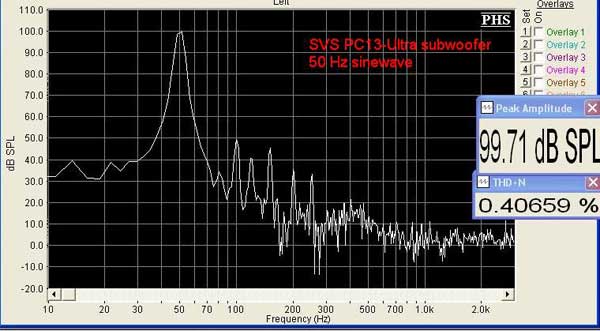
At 50 Hz, distortion was 0.4 percent.
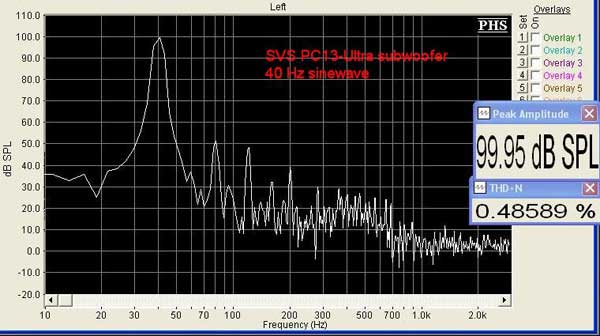
At 40 Hz, distortion was still less than one-half of a percent.
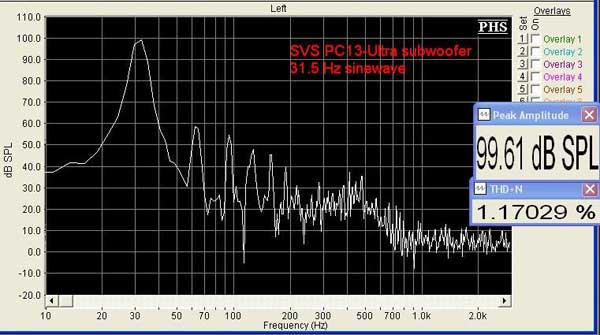
At 31.5 Hz, distortion was barely over one percent, with each harmonic at
diminishing levels.
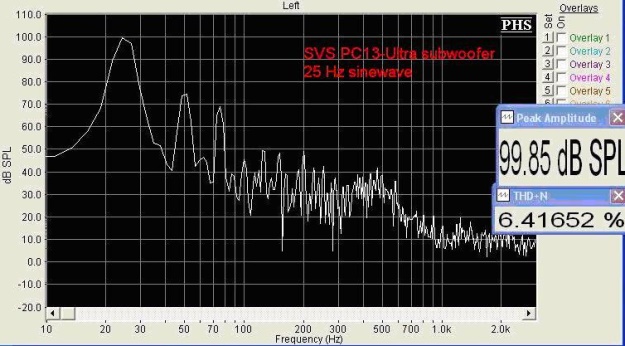
At 25 Hz, distortion is up to 6.4 percent, still well within acceptable
limits.
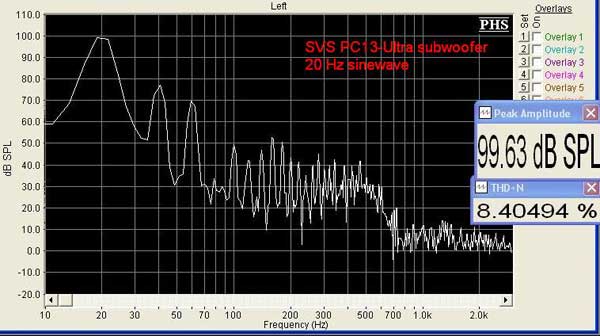
And at 20 Hz, distortion was 8.4 percent, still an excellent response. Note
also how the third-order harmonic remains lower than the second-order
harmonic, meaning that there is still additional headroom.
However, even those low frequency response graphs are somewhat unfair to the
PC13-Ultra. Because 20 and 25 Hz signals approach the natural tuning of the
cabinet, output at those frequencies was significantly higher through the
top ports. For example, the below measurement at 25 Hz was taken with the
microphone placed one foot away from the top port. I was able to get a 100
dB level measured from the top port with the input volume set 3-4 decibels
lower. And look at that distortion reading!
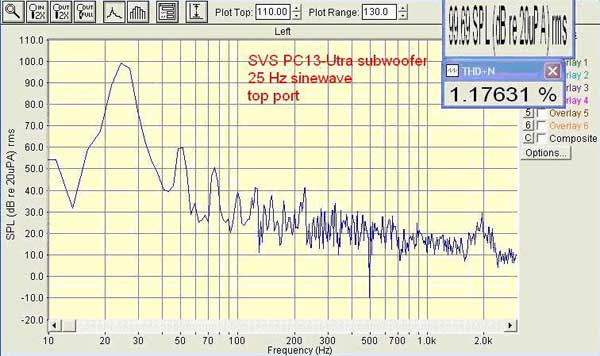
And at 20 Hz shown below, measured from the
top port, about 0.3%. This is really incredible performance!
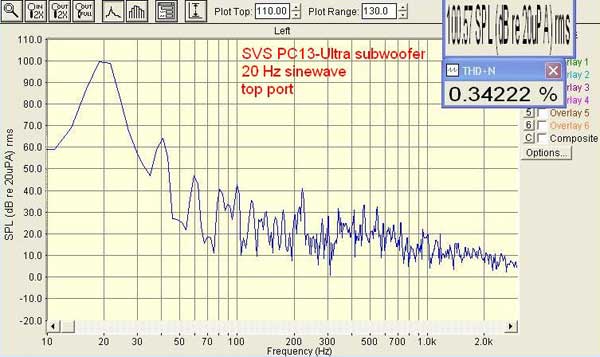
So when I was measuring 100 decibels at 20-25 Hz from the bottom of the
enclosure, the output from the top portsówhat you would hear and feel in the
roomówas actually 103-104 dB!
The impact of various tunings is shown below, again measured one foot from
the bottom of the enclosure, in a 10-100 Hz frequency sweep.
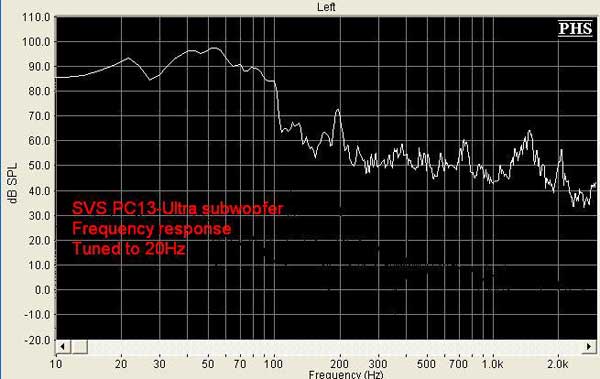
In the 20 Hz tuning, frequency response
was essentially flat (with some
accommodation made for room nodes) below a shallow roll-off starting at
about 19 Hz, but still measuring a robust 85 dB all the way down to 10 Hz.
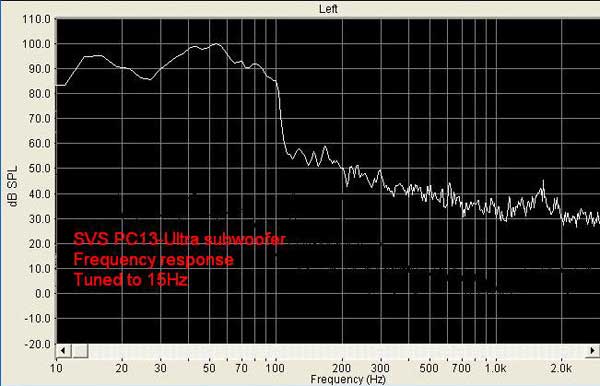
With one port plugged, and the PC13-Ultra set to 15 Hz tuning, frequency
response in the mid-bass showed a slight hump, but the low end was basically
flat all the way down to 14 Hz. Again, there is still significant power
(83 dB) at 10 Hz.
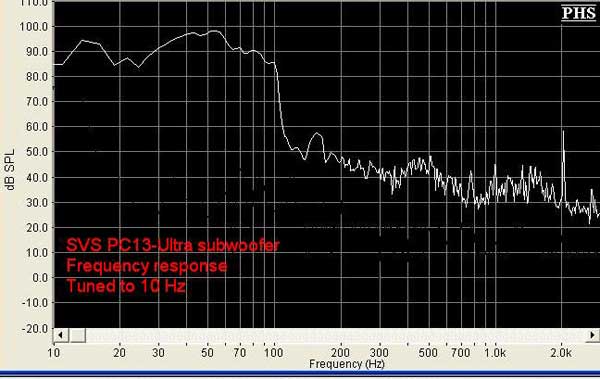
With two ports plugged, and tuned to 10 Hz, the mid-bass remained slightly
elevated with a dip between 18 and 30 Hz. But the 90 decibel signal didn't
start rolling off until 13 Hz, and was only down 4 dB at 10 Hz, at which
point the infrasonic energy started making me a little queasy (reminder to
self, next time place the test bench a little further away from the
device-under-test!)
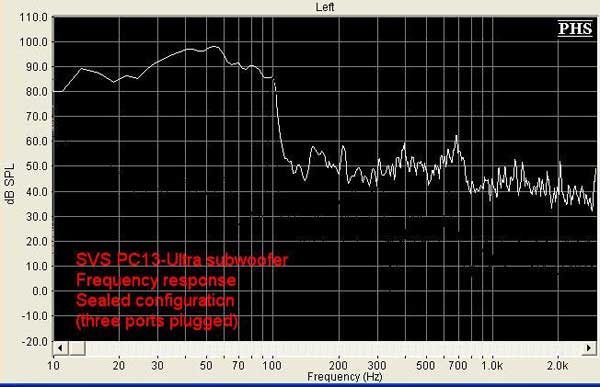
In the sealed configuration (all three ports plugged), the trade-off is
flatter response at higher frequencies versus a steeper roll of at the lower
end of the spectrum. So there's a setting to please everyone.
Conclusions
The PC13-Ultra is a fantastic subwoofer. It has tons of power, useable
output well into the infrasonic range, yet remains musical. How SVSound
manages to make such an amazing product for $1,399 is beyond me. It must be
that disintermediation thingy. I already own five subwoofers, but I still
didn't want to let this one go. Highly recommended!
- Ross Jones -